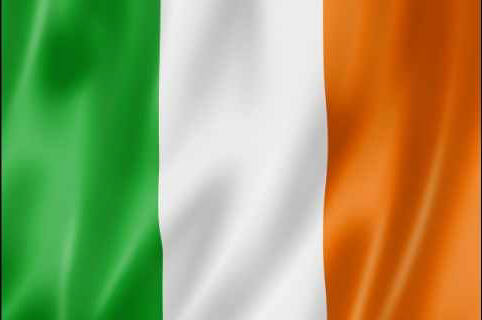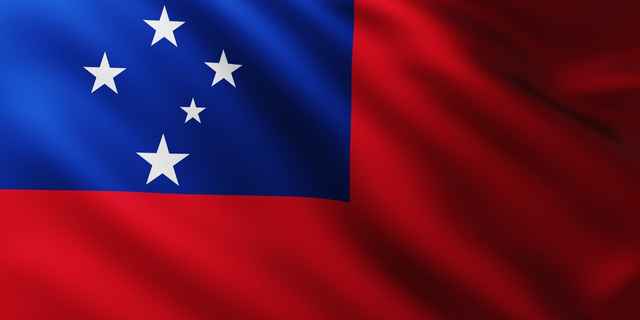Number #3: Topsy Ojo
Topsy Ojo was never an international star. The winger probably deserved more than the paltry two caps that he picked up under Martin Johnson.
But he is undoubtedly a London Irish legend. Ojo retired having played 301 times for the club in a span of sixteen years.
With that kind of tenure, it’s not a surprise that he broke Conor O’Shea’s record as top try-scorer.
Ojo’s tally is eighty tries. It’s fair to say that the fullback’s ratio was a lot higher, but London Irish was often very grateful for Ojo’s nose for the try line.
Topsy was an unselfish player and a good link man. His breaks and pass created many more tries for LI.
Early days with Irish
He grew up in London and joined the LI academy when he was eighteen. Topsy played his first senior match in 2005.
He scored a try off the bench on that debut. Delon Armitage hacked a ball through the defensive line and Ojo won the chase.
Ojo’s longevity corresponded with London Irish gaining the reputation of being the occasional nearly-men in English rugby.
I say “occasional” because their near misses weren’t that frequent either.
Ojo scored a try against Toulouse in a Heineken cup semi-final but Irish were on the wrong side of the final score. That was their finest result in a European competition.
He was also on the losing side of a Challenge Cup final in 2006 and a Premiership final in 2009.
My favourite Topsy try
Ojo’s try against Toulouse typified what he brought to the team.
London Irish had the ball for plenty of phases but were going nowhere against aggressive defence by the French team.
Ojo gets the ball chucked back to him when he is standing still. He steps off his right, accelerates through a gap, changes direction, and arcs around the final defender.
Number #2: Conor O’Shea

Conor O’Shea has something in common with Alex Corbisiero in that he wasn’t selected for junior representative sides in his schooldays in Dublin.
That’s the standard pathway to international honours in Ireland.
But a few injuries paved his way to an Ireland cap against Romania in 1993. His second cap was against France in the cauldron that was Parc des Princes.
O’Shea spent two seasons playing for Leinster from 1993. But he wanted to study sports science and was considering Brunel University.
At the same time, Clive Woodward was the London Irish coach and approached O’Shea. He rated the young fullback as the best player in the Ireland backline.
London Irish and…Leinster
Conor joined London Irish in 1995, the first of his five seasons at the club.
In the early years of professionalism, the Irish players at the club were released to play for their provinces in Europe.
So, O’Shea also played for Leinster in the inaugural Heineken Cup that same season. He actually scored Leinster’s first try in the competition when they played Milan.
Wait, you didn’t know that AC Milan also had a rugby team? Well, they did. But they don’t now.
Best days at London Irish
The Ireland team of this era played a forward-oriented game with the backs used for kick and chase. But O’Shea showed how good he was at London Irish.
He was in top form from his first season there when Irish reached the semi-finals of the Pilkington Cup.
In interviews as a coach now, O’Shea is inclined to downplay his skills as a player. He’s doing himself a disservice.
He wasn’t the flashiest player but he had great hands, acceleration, and a decent swerve. But what really stood out was his rugby brain.
He would glide into the perfect position as play unfolded. That quality made him break the record for the number of tries scored at the club.
O’Shea scored 62 tries in 127 matches. That is an outstanding ratio for a fullback.
It’s even more remarkable when you consider that Irish struggled to stay above the bottom of the league in those years.
His influence on the club included being a key part of their climb back into the first division in the 1995/96 season.
O’Shea was voted the league’s “Player’s Player of the Season” in 1999 when Irish had a decent mid-table finish.
His combination of intelligence, drive, and positivity made him a natural captain. His final season before injury forced him to retire had some great highlights.
My favourite season
Irish moved their home ground to the Stoop in the 1999/2000. It was a somewhat bizarre ground-sharing arrangement with Harlequins. It was great fun for the short time that it lasted.
They took on a highly fancied Leicester Tigers side in the Tetley Bitter Cup. Tigers had nine England internationals togging out that day.
Irish dished out a 47-7 shellacking. The Stoop rocked to the chants of “O’Shea, O’Shea, O’Shea, O’Shea”.
O’Shea then led Irish against their landlords, Harlequin and scored two tries in a 39-14 win.
Fun times indeed! I figure that the Quins blazers decided not to renew the ground-sharing agreement that night.
Number #1: Seilala Mapusua

Seilala Mapusua joined London Irish in 2006 as an established player in Super Rugby.
He had made his reputation with the Highlanders over four seasons. He also had seven international caps with the Pacific Islanders composite team.
Mapusua was a burly centre who terrorized defensive lines by charging through them. But he was also an outstanding distributor with a bullet pass off either hand.
He could fire out a pass while running full-tilt at the opposition. There are plenty of international centres who haven’t mastered that skill.
And Mapusua always had the option of holding onto the ball and deploying an old-fashioned Samoan sidestep. A lot of excellent Premiership players ended up on their backs after attempting a tackle!
He became a star in the Premiership during his five seasons at the club.
Mapusua was a key part of LI reaching a Heineken Cup semi-final in 2008, their best result ever in Europe.
His influence was felt even more in the following season. The Samoan international scored nine tries across the season.
Aside from his attacking prowess, his defence was immense.
Mapusua used his strength and bulk to make massive tackles. But he had the discipline to keep those hits legal. I well remember wincing in sympathy with the ball carrier when watching LI matches.
His contribution was a huge part of London Irish reaching the Premiership final in 2009. The game couldn’t have been any tighter, but Leicester Tigers won by a single point.
I may sound like a broken record, but that was the club’s greatest result in the domestic league.
It’s no coincidence that the strongest European and Premiership showing coincided with Mapusua’s presence at the club.
Seilala was a quiet man off the field. It’s a measure of the respect he had from the club and his teammates that he was given the captaincy in his later years at LI.
International honours

Seilala was born in Samoa but attended school in New Zealand.
The All Blacks brought him into their junior team. He played on the underage team that won the Junior World Cup in 1999.
Mapusua won a total of thirty-three caps with four for the Pacific Islands and twenty-nine for his beloved Samoa.
He played in Manu Samoa’s historic win against Australia in 2011. The Wallabies were ranked second in the world at the time. Samoa combined muscle and flair to win by 32 points to 23.
The first Samoan try was a Mapusua flick between his legs to Alesana Tuilagi. Alesana was an even bigger man than Seilala and he brushed off Matt Giteau before dotting the ball down.
As the match came a close with the Wallabies throwing everything at Samoa, Mapusua put in one of his trademark bone-crunching tackles on Kurtley Beale.
A leader off the field
Seilala was hugely popular with the London Irish faithful, and not just because of his dynamic play on the field
He was renowned for making time for every supporter, young and old, after matches.
Mapusua had a giant grin in every requested photograph. He signed every program thrust at him regardless of whether the game was won or lost.
More than that, Mapusua put great efforts into improving the conditions for his fellow Samoan teammates at international tournaments.
Funding has long been an issue for Samoa and the other Pacific Islands, and the players weren’t always looked after.
Alongside players from Fiji and Tonga, Mapusua took a lead in organizing for improvements.